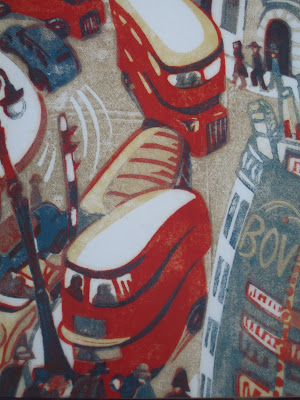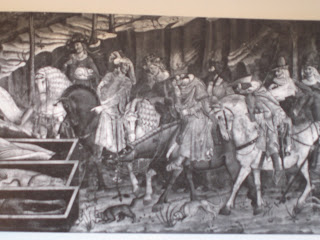 Georges de La Tour
Georges de La Tour, 1630 French (Metropolitan Museum of Art NYC)
Oh how I love La Tour's faces, especially the women! Look at how pale and fresh-faced she is. Don't you want to see her hair? I'll bet she is blonde or maybe with a hint of red... long, wavy locks, who knows? She seems as though she could be a woman of today's time. I'm sorry to say, I have not seen a lot of La Tour paintings, but I can't help mentioning the movie,
Le Divorce, starring Naomi Watts and Kate Hudson. It is based on the Diane Johnson novel and the story is partly about who is entitled to possessing a family painting thought to be by La Tour... great movie if you like Paris and a slice of French living. Enough rambling, here is a proper short history of Georges:
'La Tour, Georges de 1593-1652. French painter, active in Lorraine. He was patronized by the duke of Lorraine, Richelieu, and perhaps also by Louis XIII. Many of his pictures are illuminated by a single source of light, with deep contrasts of light and shade, as in Joseph the Carpenter about 1645 (Louvre, Paris). Theye range from religious paintings to domestic genre scenes.' (Brockhampton)
 Composition in Blue, Yellow, and Black - 1936. Piet Mondrian. Oil on canvas, Kunstmuseum, Basel, Switzerland.
Composition in Blue, Yellow, and Black - 1936. Piet Mondrian. Oil on canvas, Kunstmuseum, Basel, Switzerland.




















